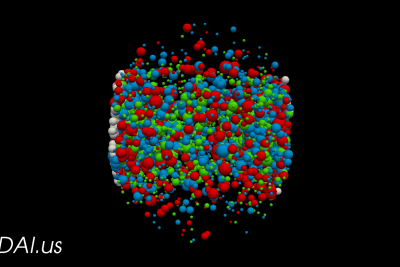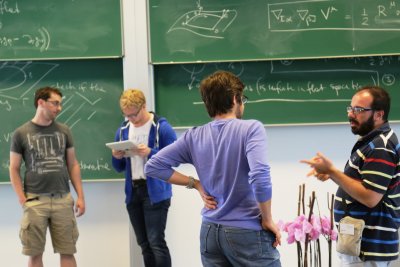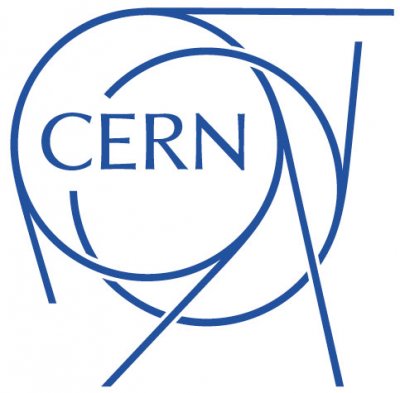Theoretical Sciences - Overview
The fascinating world of theory
Theoretical physics is the discipline that aims at describing how the world works in terms of fundamental equations. The goal is to abstract explicit phenomena by reducing them to underlying principles that are responsible for many different manifestations in nature. Physical processes are often the basis for other natural sciences, e.g. quantum mechanics is important to understand atoms and therefore chemistry. Establishing knowledge about the microscopic dynamics is crucial to understand macroscopic emergent phenomena. Theoretical physicists at FIAS are working on complex models on very different scales from the elementary particles in the universe to huge objects like neutron stars, two examples of structures governed by the theory of strongly interacting matter.
The properties of such matter under extreme conditions, governed by the theory of Quantum Chromo Dynamics (QCD), are still largely unknown. At high temperatures - accessible in heavy ion collisions - QCD predicts a phase transition from ordinary matter to the Quark-Gluon-Plasma, where the elementary constituents become unconfined. Other interesting new phases of strongly interacting matter, e.g. color superconductivity, at high densities and low temperatures might be realized in the interior of compact stars.
Our research focuses on:
- Calculations of the equation of state and the phase diagram with effective models based on hadronic and partonic degrees of freedom, e.g. different versions of the relativistic mean field model, chiral models with Polyakov loop and dilaton field, resonance gas model.
- Dynamical modeling of the complex many-body dynamics of heavy-ion collisions, using methods from classical and quantum mechanics, statistical mechanics, transport theory, quantum field theory, and gravity duality. The employed models include e.g. relativistic hydrodynamics and transport theory, employed for example in UrQMD or SMASH.
- Studies on the structure of exotic nuclei away from the band of stability including hypernuclei and antinuclei by solving the corresponding many-body problems. Binding energy and excitation spectra of these nuclei help understand the syntheses of heavy atoms in stellar explosions.
- Also topics like the distribution of renewable energy can be solved using very similar techniques. Various groups at FIAS are thus involved in modelling energy scenarios.
Weitere Informationen
Groups
Find more information about the research done at FIAS by visiting our research groups.
Conferences
Scientific enhancement thrives trough the continuous exchange with scientists from different organisations and countries. More information about our conferences.
Projects
From the first moment of our universe to today power supply shortages – FIAS scientists work on many exciting topics.













